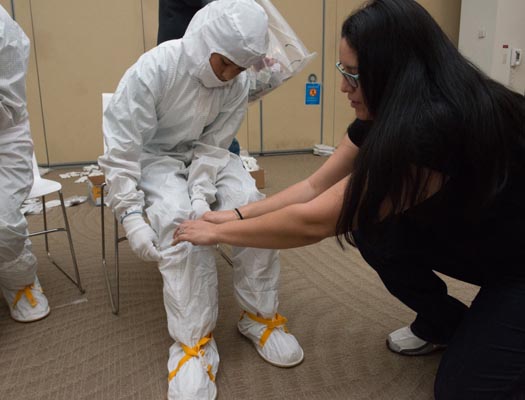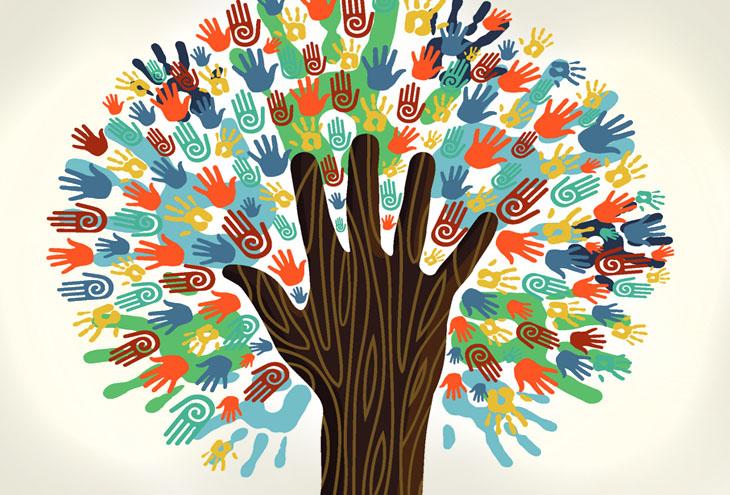A genuine investment in corporate social responsibility means everybody wins
When it comes down to it, most of us have a basic desire to do good and feel that we’re making a positive contribution to our world. And with so much of our adult lives spent at the office, on the jobsite, or in the field, it’s becoming increasingly common to actively search out and work for companies that really care about the communities around them. Workplace philanthropy and programs for social good provide employees with opportunities for both personal and professional growth and can positively impact engagement and retention rates. This component of a well-rounded benefits package is a win for all involved.
Examples of work-sponsored philanthropy include matching-gift programs, flexible scheduling and paid time off for volunteering, and donations through payroll deductions. The offerings are striking a chord with employees. According to a study conducted by CECP: The CEO Force for Good, which surveyed more than 250 companies representing 16.6 million employees, the average employee-volunteer participation rate was 31 percent in 2016.
Several organizations are getting creative in the ways they enable employees to contribute their skills and time. As part of the 3M Impact skills-based service program, teams of 3M employees travel worldwide, collaborating with local organizations to develop solutions that make an economic, social, or environmental impact. The Intel Involved Matching Grant Program awards cash grants to schools and community organizations based on volunteer hours reported by Intel employees. Novo Nordisk sponsors a competition that gives employees $10,000 to support their chosen charity.
Keep in mind, however, that employers don’t have a monopoly on good deeds. Your local community likely offers numerous ways to volunteer. Coaching a youth sports team, organizing a holiday food drive, lending a hand and sharing your skills directly with organizations like Habitat for Humanity or Big Brothers Big Sisters of America — all are worthy activities and likely to reinforce the warm and fuzzy feelings that come from helping others.
Farther afield, and for those truly committed to making a difference, the New Mexico–based Americans for Indian Opportunity Ambassador Program helps Native American professionals who are at the early and middle stages of their careers “strengthen, within an Indigenous cultural context, their ability to improve the well-being and growth of their communities.” The two-year program combines home- and travel-based learning. Each ambassador creates and completes an initiative that hones their leadership skills while also benefiting their community.
Another draw for employees looking to work for an organization whose values align with their own are demonstrated examples in the workplace of diversity and inclusion. Although it’s critical that these efforts have the full support of company leaders, they don’t have to be instilled solely from the top down. In a 2014 Profiles in Diversity Journal article, author Robin Pedrelli lists 10 ways employees can support diversity and inclusion. Actively engaging in the diversity effort at work, she says, can mean participating in an employee resource group, volunteering to chair or serve on committees that organize diversity-related events and activities, or becoming a mentor, mentee, or part of a co-mentoring relationship. While these activities require a commitment of time, they offer valuable opportunities for both personal and professional development in the short term — and can make a real difference for future employees.
Employees today have made it clear that they desire more than just a paycheck when they go to work each day. They want to feel engaged and proud of the company to which they devote 40-plus hours each week. Not all employers can or want to focus solely on making the world a better place. By finding ways big and small to use their product or service for good, however, employers can carve out a niche that ensures commercial success but also showcases their heart. And in turn their workforce can contribute with confidence, knowing that what they are doing — no matter how inconsequential it may seem — matters. Poet Julia Abigail Fletcher Carney put it nicely in the first stanza of her poem “Little Things”: “Little drops of water / Little grains of sand, / Make the mighty ocean, / And the pleasant land.”

for a site tour hosted by INAN NM tries on
a “bunny suit,” which is worn in the factory.
Sonya Kie, San Felipe Pueblo, has been with Intel Corp. for more than 18 years. She is currently a BBR manufacturing technician and Intel Native American Network New Mexico (INAN NM) site chair. Here Kie discusses the ways Intel encourages its employees to make a difference, as well as the benefits of getting involved in your local community, both through work and on your own.
How does Intel enable employees to give back to their communities?
I think Intel does a great job allowing all employees to give back to their communities with several different volunteer programs, including the Employee Matching Gift Program and Intel’s Global Volunteer Program, as well as several team projects and individual projects that are locally focused, just to name a few.
Can you tell me about the Intel Involved Matching Gift Program?
The Intel Employee Matching Gift Program is one of my favorites. An employee or retiree can donate year-round to thousands of eligible U.S. charitable and education organizations, and their contributions are then matched by Intel (up to $10,000 per employee per year — $5,000 for eligible charitable organizations and another $5,000 for eligible education organizations). This is great because it actually doubles the impact of the employee’s contribution. Intel not only matches monetary contributions, it also actually matches volunteer time. For each hour an employee volunteers for one of the eligible organizations, Intel will match that time with $10. You can imagine the impact that just a single person can have. While my son was in elementary school I was able to periodically volunteer several hours a week. Being a single mom, I wasn’t able to donate dollars; however, I gladly donated my time, and with the Intel Employee Matching Gift Program I felt that my efforts were doubled.
How are Intel and its employees involved with AISES (throughout the year and/or as part of the AISES National Conference)?
Any Intel employee can be involved with AISES, but usually our employee resource group INAN is connected with AISES. INAN has sent representatives to the AISES National Conferences and Leadership Conferences as representatives of Intel. Our employees have hosted sessions at each of the conferences, been judges for various science fairs and poster presentations, and served as volunteer staff for AISES conferences and participated in the important student and professional interaction at the career fair. Intel has engaged in several activities in collaboration with AISES at the local and regional levels as well.
My favorite example of this: During the 2015 AISES National Conference, the INAN X-Site team hosted a four-hour maker event at the Arizona Science Center’s Create makerspace for 80 participants, including high school and college students and teachers. They were taught about the maker movement using Intel technology, including Galileo and Arduino 101. Due to all of the preparation and number of volunteers needed, the event allowed all of the INAN members and other employees to log several volunteer hours to this single activity. With the combined efforts of all employees, the match grant for AISES in 2016 was $10,000.
How are employees encouraged to engage in Intel’s volunteer/philanthropic programs?
I think volunteering — from volunteer “challenges” or goals to websites that match an individual or team with an organization or event that needs volunteers — is such a huge part of our identity as an Intel employee. Much of our volunteering is done as team-building activities. Intel as an organization does a great job encouraging employees to participate in all types of volunteer activities. So many of our employees already do so many volunteer activities on their own time. I personally know of several who make deliveries for Meals on Wheels, some who volunteer at their churches, and so many others who take time to volunteer at their children’s school.
Are there some programs that are more popular than others?
Unfortunately, I am not aware of which programs are more popular than others. My bias leans toward AISES and the Intel matching grant.
Is there anything people might be surprised to learn about the benefits of volunteering/making donations (of money, time, expertise)?
Of course, it always feels good when you are able to donate time or money, and the benefits that those donations have for each organization are endless. However, there is always that old saying, “I receive much more than I give,” or something to that effect. Nothing could be truer in this case. A couple of years ago there was a collaboration with the NM INAN group and the local RoboRave team. The RoboRave team created a voice-activated car that was programed with several Native languages as well as the different dialects of the Keres language. The car was showcased at a career day event. We surprised the students from San Felipe Pueblo when we began to speak and give the car commands in their own native language. The excitement and smiles that were on the faces of those students were absolutely breathtaking. Those moments make all the planning, time, and everything else worth it.














